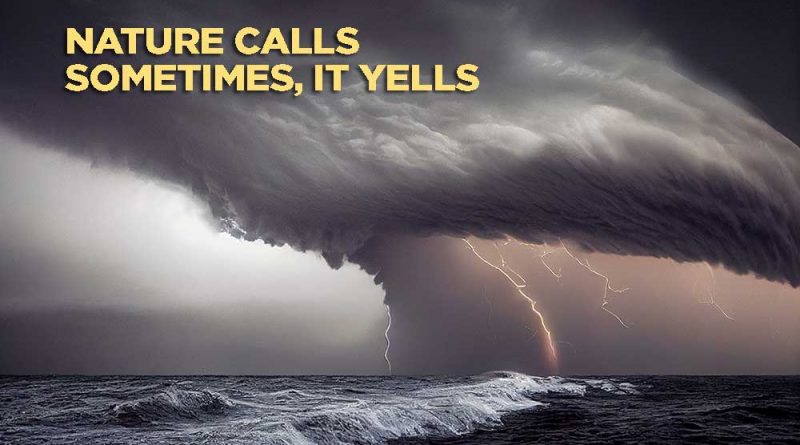Why It Is Essential to Fund Disaster-Relief Programs
Natural disasters kill tens of thousands of people each year and can cost governments billions of dollars. One of the most expensive of these disasters was Hurricane Katrina in 2005. That disaster cost the U.S. over $182 billion with a death toll approaching 2,000.
In the United States alone, 97 natural disasters took place in 2021, with a total of 401 natural disasters that occurred worldwide that year. Natural disasters are happening all around us and it is crucial that available funding is utilized to ensure programs are in place before disasters hit. To succeed in acquiring grant funding, it is vital that local, state and federal government agencies work together.
A Look at Recent Earthquakes in Turkey and Syria
In the early hours of February 6, 2023, a 7.8 magnitude earthquake hit outside the town of Gaziantep in Turkey near the Syrian border. The earthquake caused tremendous devastation in its wake. Numerous aftershocks followed, including one with a 7.5 magnitude.
After more than 84 hours, workers miraculously continued to locate and pull survivors out from under the rubble beneath dozens of high-rise apartment buildings that had completely collapsed. However, in spite of their efforts, the earthquake and resulting aftershocks caused a catastrophic loss. This is both in terms of the physical destruction in the region as well as the unimaginable loss of life. More than 35,000 have already lost their lives, but officials expect the death toll to grow as the search for victims continues.
It is estimated that the cost to Turkey to rebuild will likely exceed $84 billion. This would be the equivalent of 1% of the country’s entire GDP (Gross Domestic Product).
The extent of the damage in Turkey was due to two main factors: this region had not experienced a major earthquake for more than 200 years, and many buildings in Turkey did not withstand the force of the earthquake due to allegedly sub-par construction of many of the buildings that were destroyed. As a result, the country was not as prepared as it should have been.
The Importance of Disaster Preparedness
Since natural disasters are unpredictable, it is important to be as prepared as possible for if and when they occur. This means having preparedness plans in place, as well as the personnel and funding necessary to cope with the disaster. Over the past ten years, disasters have become more constant. According to The Pew Charitable Trusts, money spent on natural disaster relief during this time by the Federal Emergency Management Agency’s (FEMA) public assistance program has increased by 23 percent.
There are five elements of disaster preparedness. This includes prevention, mitigation, preparedness, response and recovery. All of these elements are crucial, but many states seem to focus more on post-disaster recovery rather than investing in mitigation and preparedness. However, if states focus more on mitigation, they can save money in the long run. According to The Pew Charitable Trusts, “every state saves at least three times as much in post-disaster recovery costs as it invests in mitigation.”
This is why government agencies should focus on tracking their current spending on disaster relief, so they can make budget changes if needed. Along with shifting funds to mitigation efforts, it is also important to put money into infrastructure. This will ensure that buildings and roads are better equipped for disasters.
The Correlation Between Poverty and the Effects of Natural Disasters
Improving infrastructure can help mitigate the effects of a natural disaster, but improving living standards can also be beneficial to low-income individuals who might face a natural disaster at some point in their life. Areas of poverty can often be the most vulnerable to natural disasters because they are already facing financial hardships and do not have the emergency savings needed to cover the ramifications of a disaster.
However, if funding is available to help low-income individuals and areas of poverty, the number of deaths will be reduced when the inevitable disaster hits. In addition to government grants, there are also many foundation grants available to help communities and individuals. Below, are 7 grants that are available to help with disaster relief.
7 Grants to Aid in Disaster Relief
- Grants are available to aid library staff and disaster workforce members to receive disaster preparedness training.
- There are grants of up to $2500 available to nonprofit organizations for urgent disaster relief.
- Aid is available in eligible regions to provide disaster relief, rescue and response services to animals. Nonprofit veterinary clinics, pet shelters and disaster response organizations can apply for grant funding.
- In addition, there are grants to organizations and fire departments to respond to fires and disasters and offer assistance. Individuals impacted by a fire or disaster may also apply for financial assistance.
- Grants are also available to organizations to fund disaster relief efforts to benefit animals.
- Additionally, grants are available to individuals and households for disaster relief efforts and recovery support.
- Funding of $2,500 is also available to entrepreneurs to support recovery after a natural disaster.
GrantNews Notes
Are you looking for more grants like the ones on this list? GrantWatch features an entire category of grants specifically for disaster relief.
With close to 8,000 grants currently available, GrantWatch.com is the leading grant listing directory. A MemberPlus+ subscription is required to view the full grant details, including the eligibility criteria and application information. For more information, you can also visit the GrantWatch FAQ page.

